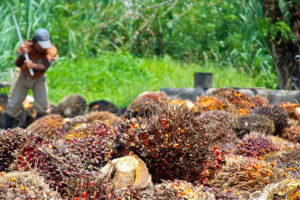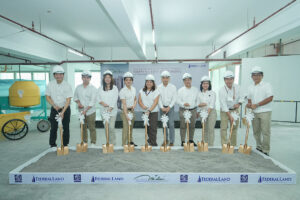Java without java? The crisis brewing in coffee

IN COFFEE COUNTRY, people don’t need an extra shot to recognize their future is tough. On an iconic Indonesian island, powerful forces are eroding an industry that not only helped caffeinate the world, but provided livelihoods for generations and had a significant historical role as a template for economic development. It’s not outlandish to contemplate Java without java.
Climate change has been central to the good times and instrumental to coffee’s discouraging prognosis in Indonesia, the world’s fourth-biggest producer. Crop shortfalls around the globe drove an epic advance last year in the price of beans, a rally that’s cooled in recent months along with retreats in commodity prices. Folks along the coffee chain don’t like the omens. The long-term challenges they describe aren’t limited to Indonesia. The travails are shared, to degrees, by Brazil, Vietnam, and Colombia. Ultimately, they will be felt by urbanites in New York, Tokyo, London, anywhere lattes and mocha are a staple of social and professional life — or just surviving a weekend with young kids.
During a visit to the area around Banyuwangi in eastern Java, retailers and farmers shared their concerns: rising temperatures, unpredictable weather, inconsistent bean quality, deteriorating soil. A paper cited in August by Bloomberg Opinion projected that land suitable for coffee-growing would shrink dramatically by 2050, with the most highly suited regions declining by more than 50%, as the planet warms.
Given the drink’s huge — and still growing — popularity, the math is punishing. “Nearly every coffee production area on Earth is already experiencing increases in weather variability, which pose major threats to both plants and people,” according to a strategy document from World Coffee Research, an organization comprising coffee companies that was formed in 2012 to boost innovation. An important part of the solution has to be the development of more climate resistant varieties. But this shouldn’t just be driven by industry: the nations with the most to lose — the majority are developing economies — need to recognize the importance not just to commerce, but social stability and the environment. It’s one thing to say farmers should simply move to higher ground. Who buys the space for them? And what happens to communities already there?
There are also laments that young Javanese aren’t interested in working the land, and instead prefer the air-conditioned comfort of offices a two-hour flight away in Jakarta. Or college in one of Indonesia’s large cities. Anywhere other than their rural homes. Given the diminishing prospects for the industry, it’s a wonder any youths remain at all.
Adi Susiyanto is one who stayed. Fixing me a pour-over of the robusta variety late one morning, Adi, a barista at roadside café Sarine Kopi, told me he knows something is wrong. He has lived around Banyuwangi all his life and reckons climate change is slowly but surely reshaping life in the area. “The quality of the coffee used to be consistently good,” he said. “Now, it’s all up to the weather.” Nurul Hidayah, a fifth-generation farmer, shares the foreboding as she tries to dry beans in her front yard. “It rains for much longer nowadays.”
Irfan Anwar, head of the Association of Indonesian Coffee Exporters and Industries, prefers to see the mug as half full. Sure, production in the country faces substantial threats, though it’s a similar story in several countries. The challenge of climate change isn’t unique to Indonesia, he says, and meantime, demand is holding up. “We are not looking for problems,” he added.
They’ll find him, and his counterparts, nonetheless. Early projections of a bumper Brazilian crop in 2023 are unlikely to materialize. The Latin American giant is facing the inverse of Indonesia’s affliction: rainfall that is significantly below the historical average. Brazil has also contended in recent years with heavy frosts that ravaged crops. In Vietnam, harvests are disappointing and stockpiles are falling. Hanoi has gone so far as to warn cultivators desperate for an income against switching to durians.
Whatever fundamental changes are coming to coffee in Indonesia, don’t be surprised if theypresage broader implications. The beverage is intimately tied to theeconomic, social, and political history of the country. Coffee bushes and drinking arrived in the late 1600s through Dutch merchants, according to Jean Gelman Taylor’s Indonesia: Peoples and Histories. East India Company officials began planting seeds around the site of present-day Jakarta, giving plants to Javanese provincial chiefs who ordered farmers to harvest beans in order to pay taxes, she wrote. Coffee became a fixture of early transportation and warehouse systems. Supplies and cultivation were managed to reflect, and influence, market trends in Amsterdam, the commercial center of the colonial power. An entire fiscal system and networks of patronage fashioned trends in rural migration, finance, diet, and even the evolution of sex work.
The natural environment has wreaked havoc before: In the 19th century, a virus spread among coffee plants and prompted a shift from arabica beans to the tougher, and more bitter tasting, robusta variety. The bulk of Indonesia’s coffee today is robusta, though arabica, a smoother blend, can also be found on the hillsides around Banyuwangi, jostling for space with rubber, chili, and potato plants. Rising temperatures suggest renewed vulnerability to disease.
WCR, whose members include Starbucks Corp., Tim Hortons, and JDE Peet’s, is working with nations including Indonesia to develop varieties that can shore up production over coming decades. “It has to happen now,” Jennifer Vern Long, the group’s chief executive officer, said in an interview. “We couldn’t even wait another year.” Under the breeding program, seeds with new genetic combinations are being shipped this month. “Any of the seeds could be a winner,” she said.
The world has a vital stake in seeing coffee, as we have come to know it, survive. It’s not just about agriculture or preserving some sepia-tinged version of rural life. Coffee is deeply ingrained in finance, politics, and the social structure of 21st century society. For Indonesia, it’s more elemental than that. The big fiscal subject in Jakarta these days is the ambitious plan for a $34 billion new capital city carved out of forest in eastern Borneo. Why can’t a fraction of that sum be set aside to bank on the future of a commodity that’s older than the Republic of Indonesia itself?
The pressures were enough to make Hariyono, a farmer who like many Indonesians goes by one name, invest in history. He inherited the business from his father and thought seriously about giving up the caffeine game around 2010 in favor of rearing goats. After talking over family legacy with his dad, Hariyono decided to add a working coffee museum to the site. When I called on him at Kampong Kopi Lego, preschoolers watched as staff melted beans in pans over fire pots.
Pouring us cups, Hariyono fretted about the rich heritage — good and ill — that stands to be lost. As vital as the weather is, there’s more to it than rain or shine. “The young don’t want to be coffee farmers, they don’t see the profit,” he complained. “I want them to know a very basic fact, that we are one of the main producers in the world. That knowledge shouldn’t be lost. That’s my mission.”
Java sans its namesake drink? A distinct possibility, Hariyono says, though he tries to be optimistic. “Maybe I am a little bit crazy.”
BLOOMBERG OPINION




